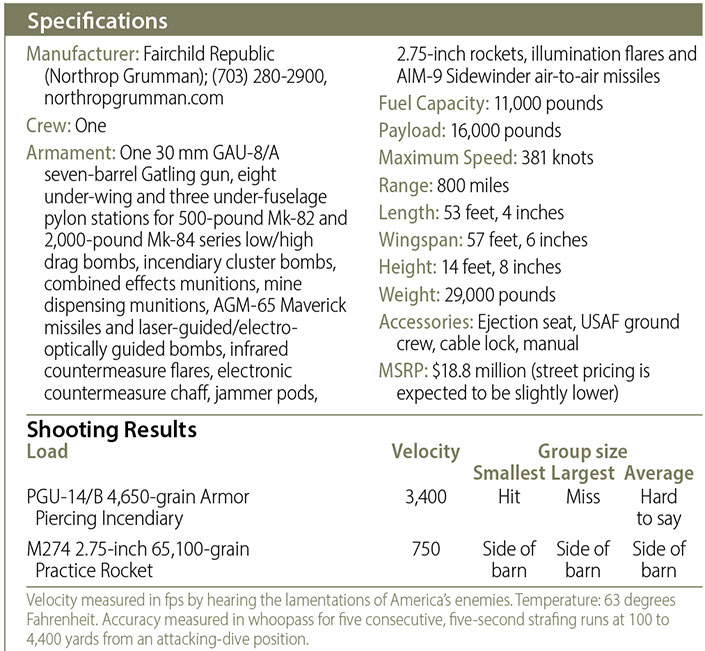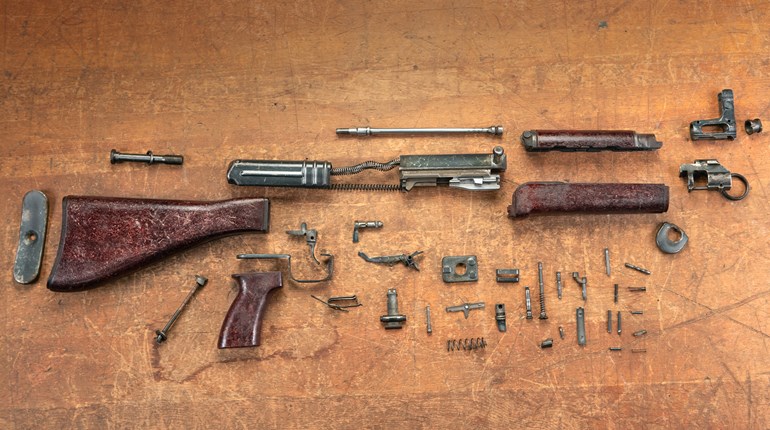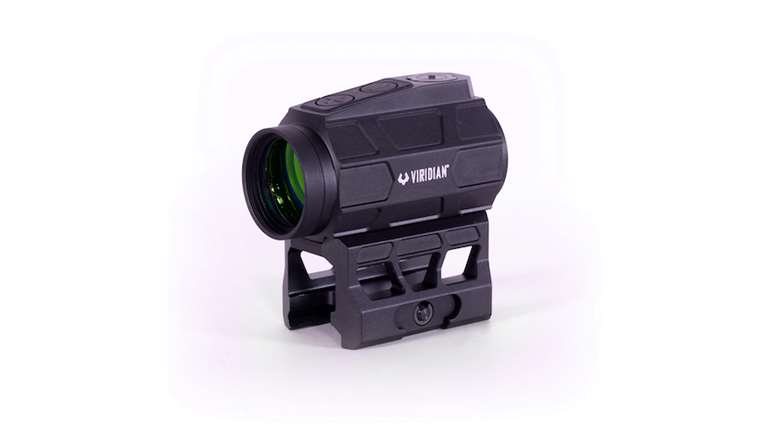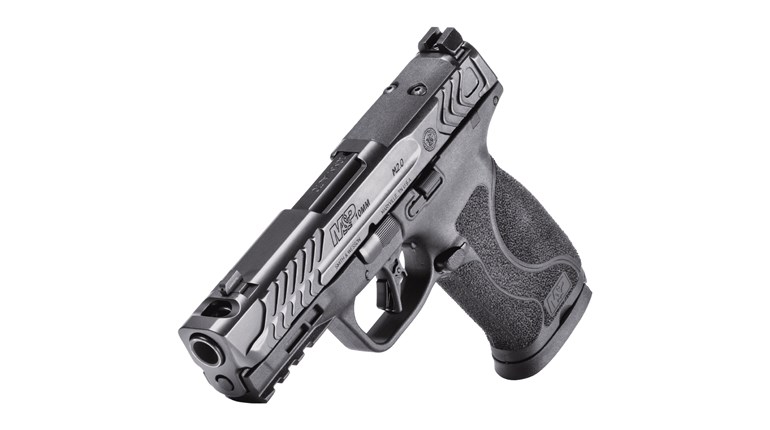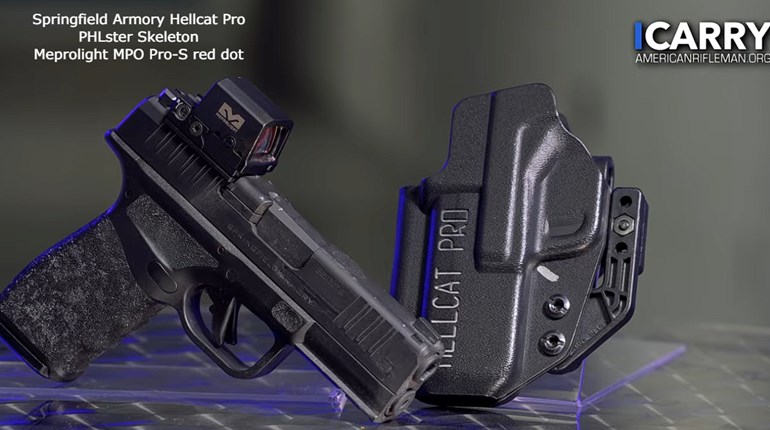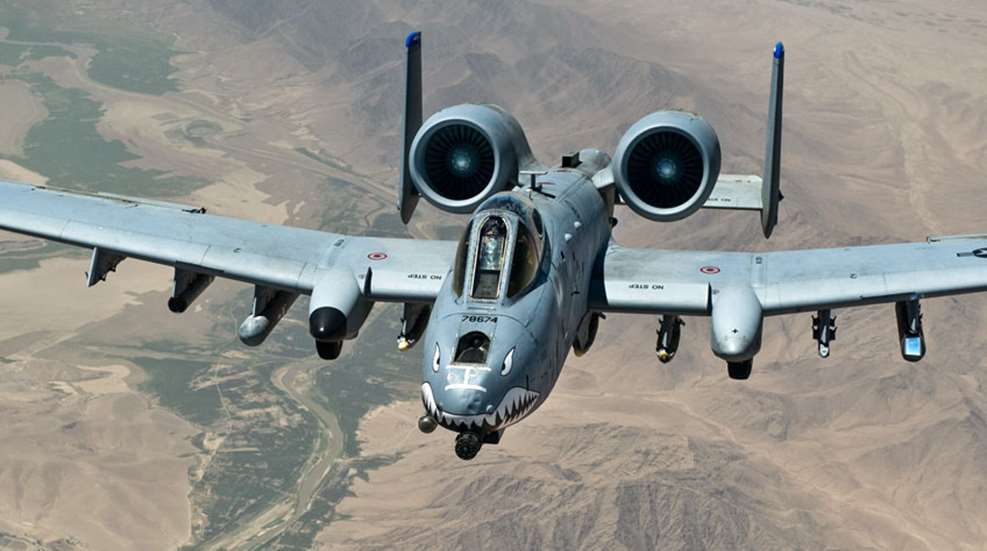
Let’s be honest, the firearms and gear that are featured in tactically flavored magazines often blend together into one big mass of Picatinny rail-laden, polymer-coated, flat-dark-earth-painted steel. Modern sporting rifle this, tiny .380 ACP that, 2-mile-bolt-gun shots, etc. Here’s something different: A Gatling gun—not the hand-crank variety, but rather a hydraulically powered, seven-barreled 30 mm wonder in the form of a General Dynamics GAU-8/A. While not exactly new, it is awesome enough to spice things up this April. Evaluating a GAU-8 poses some problems, however.
For one, it is a machine gun, and even if one were to pop up in the pre-1986, fully transferrable NFA market, it could hardly be considered widely available. There is also the little matter of its “portability.” At 620 pounds, it is difficult to shoulder. Even if you could steady the GAU-8 with your support arm, its 10,000 ft.-lbs. of recoil force would leave you with a headache and powdered bones. Fortunately, the U.S. Air Force was nice enough to design a combination buttstock and carrying system for the GAU-8, known formally as the A-10 Thunderbolt II. It is shaped like a fixed-wing aircraft, but that was just a way to get it past the military lawyers.
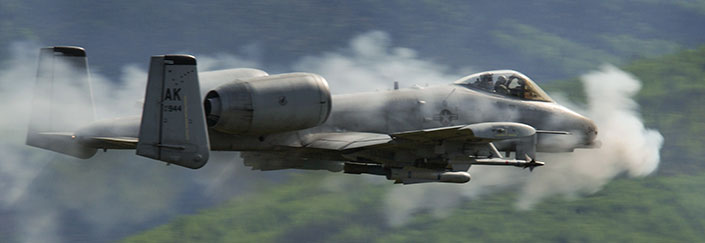
Unlike the systems we typically test on terra firma, the A-10 works its magic at altitudes ranging from 45,000 feet to slightly higher than the top of your head. It is a direct descendent of the vaunted World War II-era, P-47 Thunderbolt, and was designed with two simple principles in mind: Carry lots of things that go bang and keep the pilot alive. Accordingly, Thunderbolt cockpits are surrounded by a titanium “bathtub,” while flight control systems are shielded by their own armor and backed up with multiple redundant systems. The A-10 carries enough ordnance to wreak havoc on large numbers of hardened vehicles, buildings and bad people everywhere.
The trusty “Warthog” has been flying since the mid-1970s and is particularly effective at shredding enemy armor formations (see Operation Desert Storm). Thousands of current and former ground-pounders have delighted at hearing the distinctive scream of twin, General Electric TF34-GE-1 00 turbofan engines as an A-10 (or two) rolls in low to unleash a dose of 30 mm justice upon someone entirely deserving of the verdict.
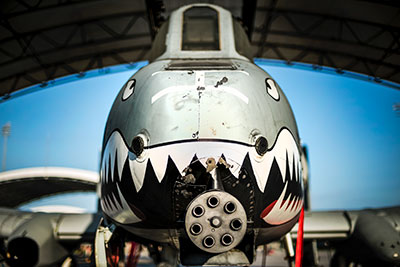
A-10s are continually targeted by over-zealous bean-counters, and its pilots take more flak from fellow fighter jocks than from enemy AAA. But my experience has been that they do what no other fixed-wing platform can: Fly low and slow, take a metric ton of punishment, dole out two metric tons of pain, fly back to base to rearm and refuel, then scream back onto station and beg for more things to destroy.
After seeing them in action many times, I came to fully appreciate the Air Force’s GAU-8 gunners (sometimes referred to as A-10 pilots) while doing work on post-Sept. 11 battlefields. Whether flying upside down and scouting routes through a pair of 18X stabilized binos, spotting enemy combatants around us through weapons pod seeker-heads or plowing the earth into neat little 30 mm-wide furrows, these valiant sky-grunts were vital to the success and survival of conventional forces and isolated SOF teams alike. My last evaluation of a military-issue A-10 involved a running fight in a river valley, a bunch of incoming small arms fire, RPGs and IEDs and a glorious pair of Warthogs coming in hot at ridge-top level, ensuring that I could be here to reminisce about it today. Naturally, I was anxious to see how well the new non-existent civilian version stacks up.
After securing a sample GAU-8—and its A-10 concealment device—I began with our standard five, five-shot-group, 100-yard test protocol to evaluate accuracy and function. Things went smoothly until I discovered that 4,200 rounds-per-minute translates to a 70 round-per-second rate of fire. My first “shot” yielded a 343-round burst that went slightly high of my target, the catch berm, the range limits and the horizon line. It turns out that holding a multi-barreled machine gun’s trigger back in an attempt to follow-through on target is a bad idea. The responding sheriff’s deputies told me most of the rounds impacted right at two and a half [nautical] miles away. That was fortunate, because I had forgotten that PGU-14/B Armor Piercing Incendiary rounds throw a bit of splatter when they hit. Thankfully, the test range was in the middle of nowhere (Missouri), and those high-arcing tank-buster rounds went safely over the nearest farm house.
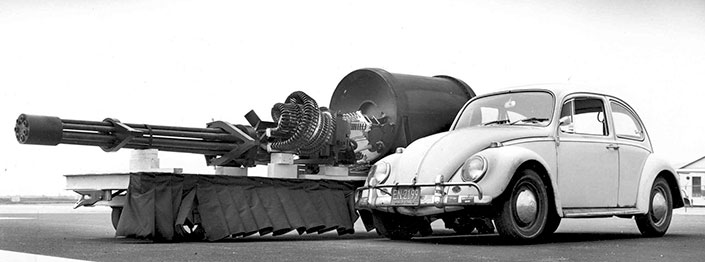
The complimentary ground crew from Northrop Grumman was nice enough to lower my point-of-aim by quickly hooking the A-10’s tail wheel to an aircraft tug. I honored their vigor by quickly loosing another very satisfying brrrrrrrrrrrt at a [water] tank surrounded by large black rocks some 500 yards distant. The rocks suddenly sprouted legs and ran away faster than any cows should be able to, indicating that the GAU-8 was right on the money. Although I saw a bunch of 30 mm ammo still in cans, the crew chief assured me they were all duds and that we were “Winchester” on ordnance.
He seemed content to only slap my hands away from the GAU-8’s arming mechanism, so I figured that the 2.75-inch rockets peeking out of the under-wing pods were still in play. I pickled their switch, and as one pair of M274 practice rockets whooshed away, I was ejected from the cockpit by two pairs of crew hands. This simulated bailout scenario was a nice bonus for the test and completely unscripted. I had to hand it to the boys: My impact on the cement pad was as hard as any high-wind parachute landing I ever made while in service. Oh, and my rockets connected nicely with a barn I was pointed toward, for which I am still paying today.
Periodically I see an article claiming that A-10s are going away for good. That is plain silly. How would our warfighters carry their GAU-8s if not for this flying holster? I have had the pleasure of assisting a wide variety of aircraft place precision fires and heavy ordnance on people who sought to accelerate my entrance into a veterans’ cemetery. Several platforms are on my favorites list—the AC-130 Specter gunship and the B-52 Stratofortress strategic bomber chief among them. But, there will always be a special place at the top of my list for the wonderfully ugly Warthog.
